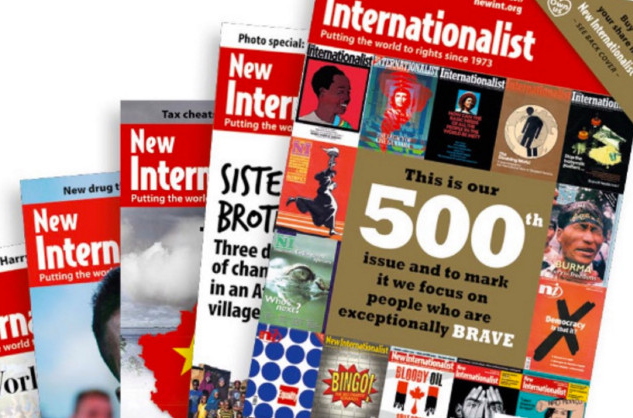On the anniversary of Occupy Wall Street, #S17, our U.S. columnist says the 99 per cent could sorely use another round of rebellion.
Published in the October 2012 issue of the New Internationalist.
Occupy Wall Street began as a small and marginal effort. As its first anniversary comes and goes, it has become small and marginal again.
To say this is not to disparage those seeking to carry on the Occupy spirit. It is to acknowledge reality in the hope of changing it.
Can Occupy rebound in its second year? What would it need to again become influential in highlighting economic inequality and challenging rule by the rich?
Some answers can be found in Occupy’s past.
In between its bouts of marginality, Occupy accomplished remarkable things. Nobel-winning economist Paul Krugman perhaps put it best. Before the uprising, ‘we were basically having an insane national discussion,’ he said. The US unemployment rate had reached double digits, something more than a third of Americans had never seen in their lifetimes. State governments reported record demand for food stamps. Yet debate in Washington DC revolved around cutting social programmes.
‘Then a group of people started camping out in Zuccotti Park, and all of a sudden the conversation changed significantly, towards being about the right things,’ Krugman explained. ‘It’s kind of a miracle.’
He’s right. But this didn’t happen instantly, and the dynamics of success were not otherworldly.
During the occupation’s first week, only a few dozen participants camped in New York City’s financial district. Despite limited numbers, they created a key dilemma: police could either allow a permanent tent city in lower Manhattan, which would be a victory for demonstrators; or they could act on behalf of wealthy bankers and shut down dissent, something that would perfectly illustrate the protesters’ claims about what our democracy had become.
A conflict was unavoidable. And when police did respond, the images generated – officers pepper-spraying non-threatening demonstrators at close range – galvanized democratic outrage internationally.
As momentum reached a peak, Occupy became an umbrella for resistance. Hundreds of cities joined. Community groups that had long conducted sit-ins at foreclosed homes saw participation swell. Labour unions organizing against poverty wages and for decent healthcare bolstered Occupy marches. Participants from the camps, in turn, joined their picket lines. Movement art, poetry, and film abounded.
Now, momentum is low. Unions and community organizations persist, but they rarely bother to identify with the Occupy label. Most of the camps have long since been evicted.
The assemblies that linger attract only a small core of activists. Many of them are focused on building a sense of mutual support among those who remain. Others are transforming vacant lots into community gardens or claiming empty buildings as squats. But these are not drives designed to reach out to the ‘99 per cent.’ Anarchists who consider this language to be watered-down liberalism don’t even aspire to that goal.
This is a problem. Occupy is a particular type of movement, one distinct from long-term efforts to build progressive institutions, political parties, or counter-cultural spaces. Rather, it is a mobilization that uses civil disobedience to shift public focus and create a burst of energy for ongoing organizing. It lives and dies by the media.
A thousand community gardens, however beneficial, won’t recapture the spotlight. A street fight with the police won’t do it either: state authorities are itching to deploy their insanely militarized arsenals. Inviting them to do so with hurled bottles and busted bank windows only isolates the movement from the wider public.
Early on, Occupy’s name was an advantage. It’s an active verb, one that serves as an audacious command to reclaim public space and public discourse. Yet in year two, the name may be a liability, suggesting that progressive imagination is limited to a single activity.
If Occupy is to regain momentum, it must create a new dilemma for authorities – or many new dilemmas – bold, creative and nonviolent.
Let’s hope it can. Because the 99 per cent in the US could sorely use another round of rebellion.
